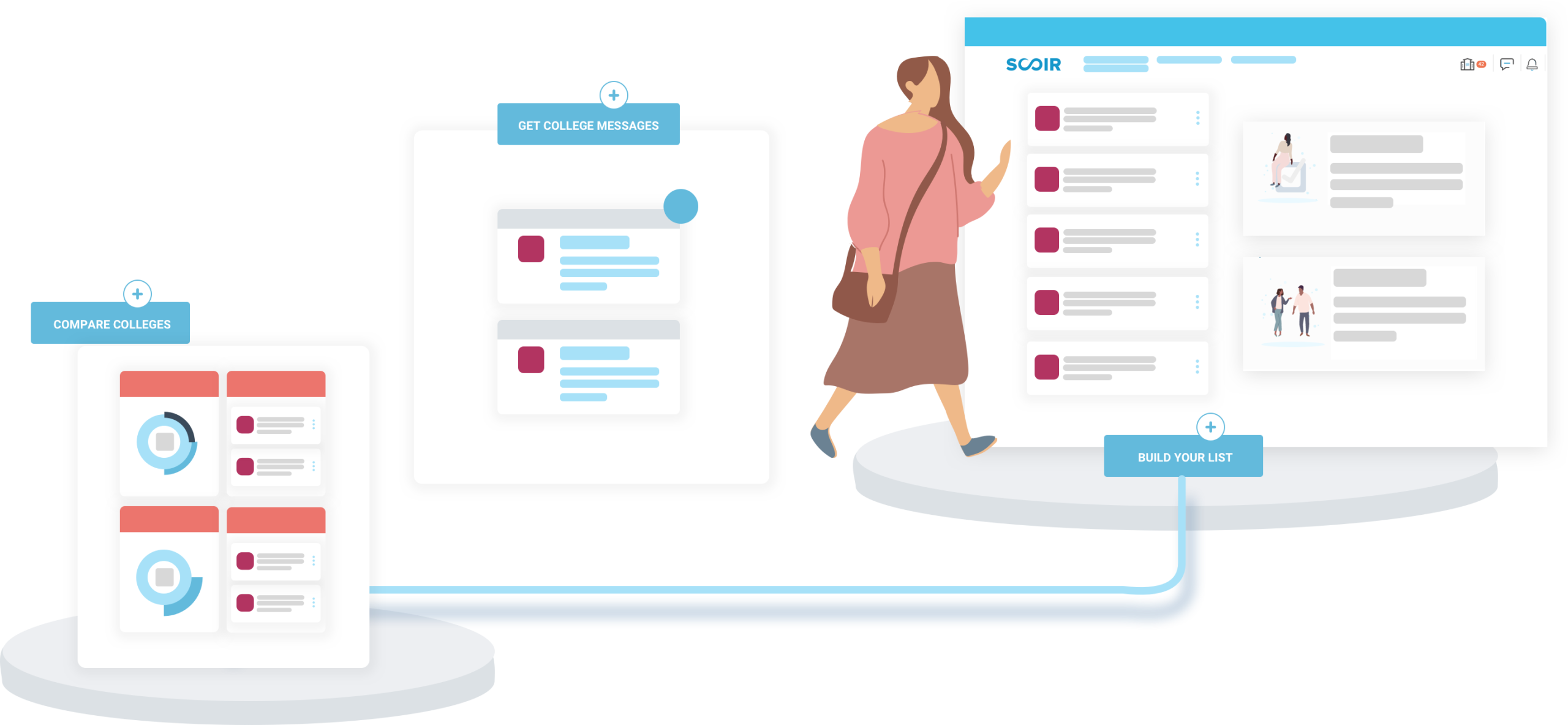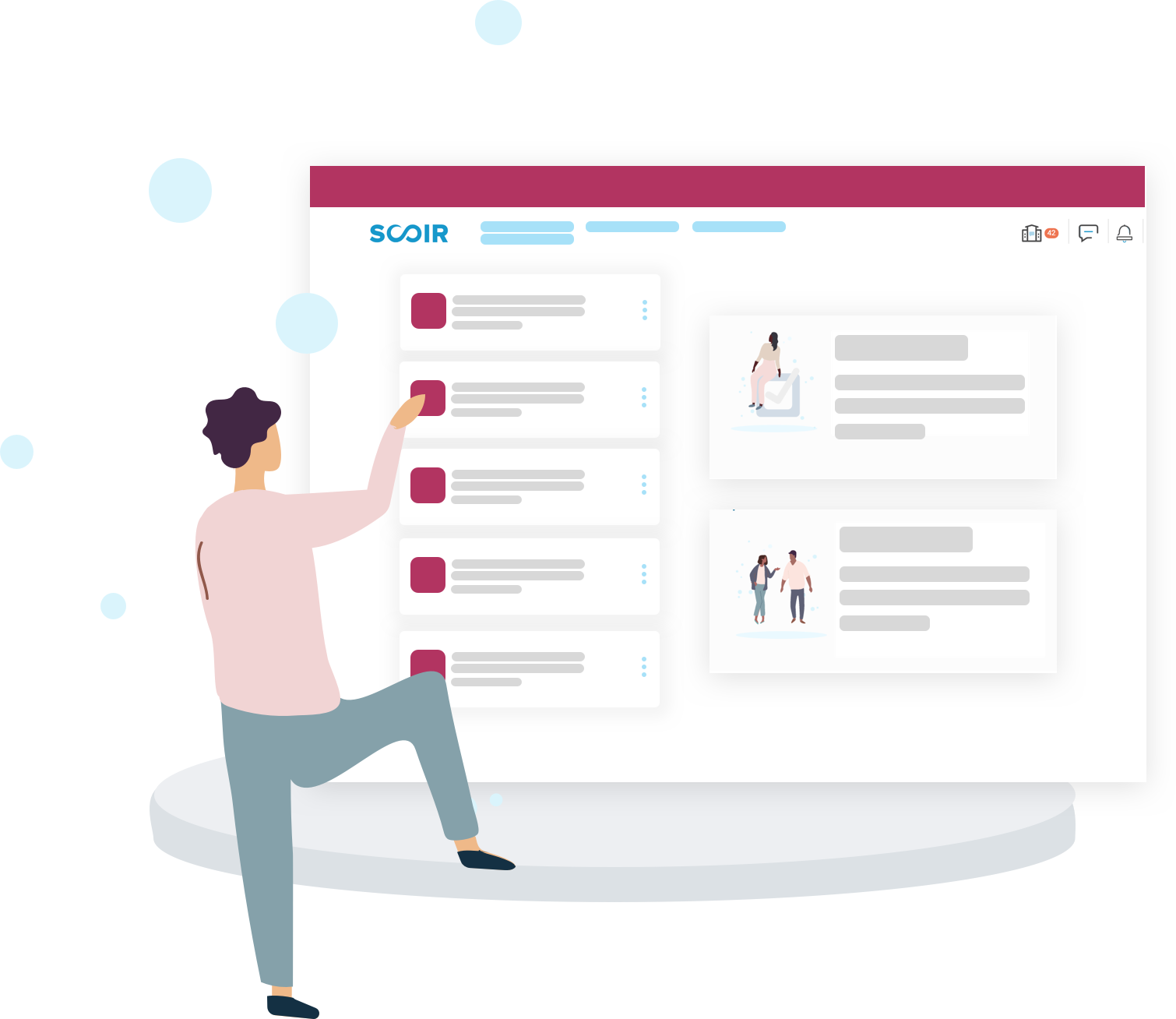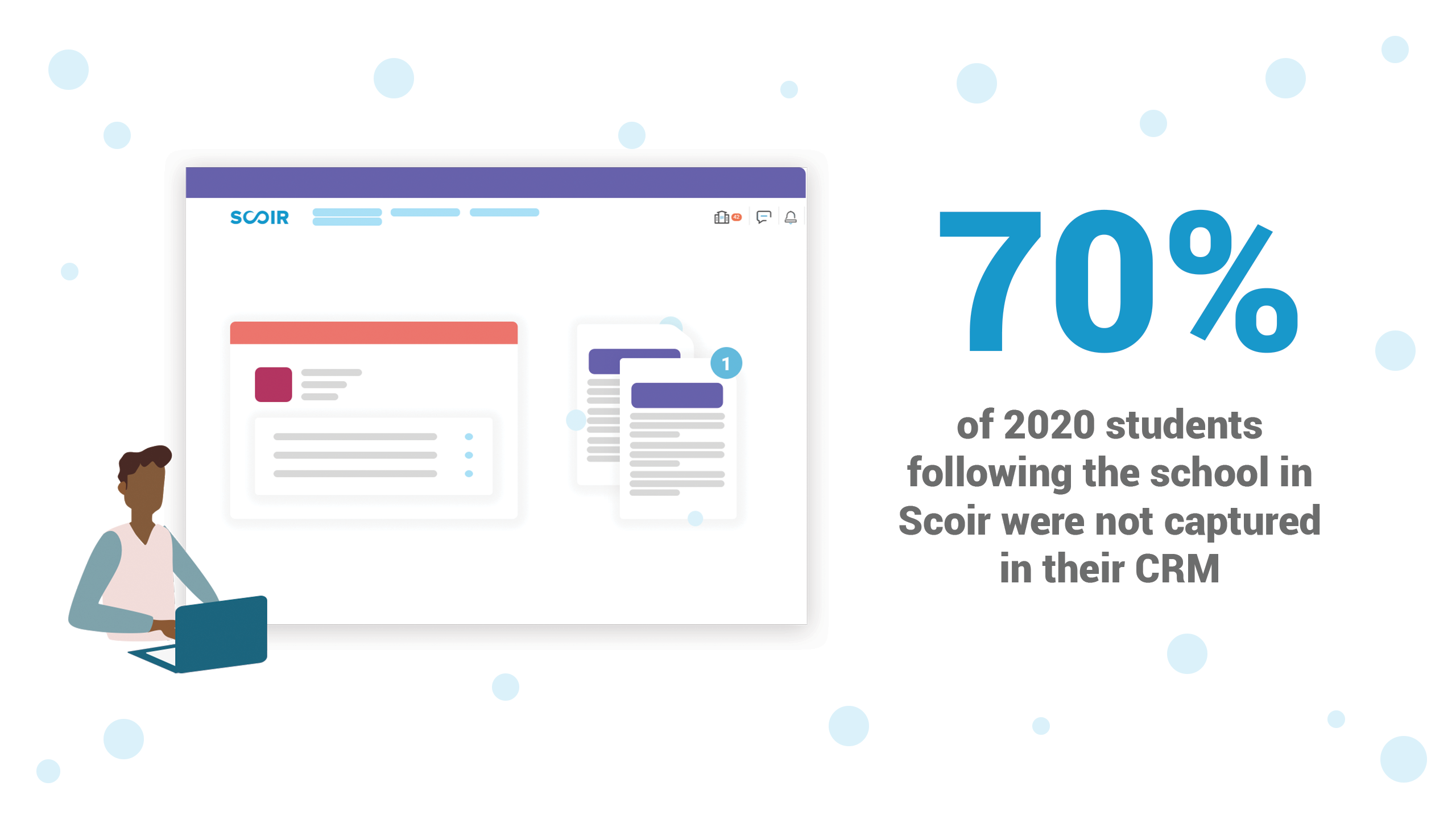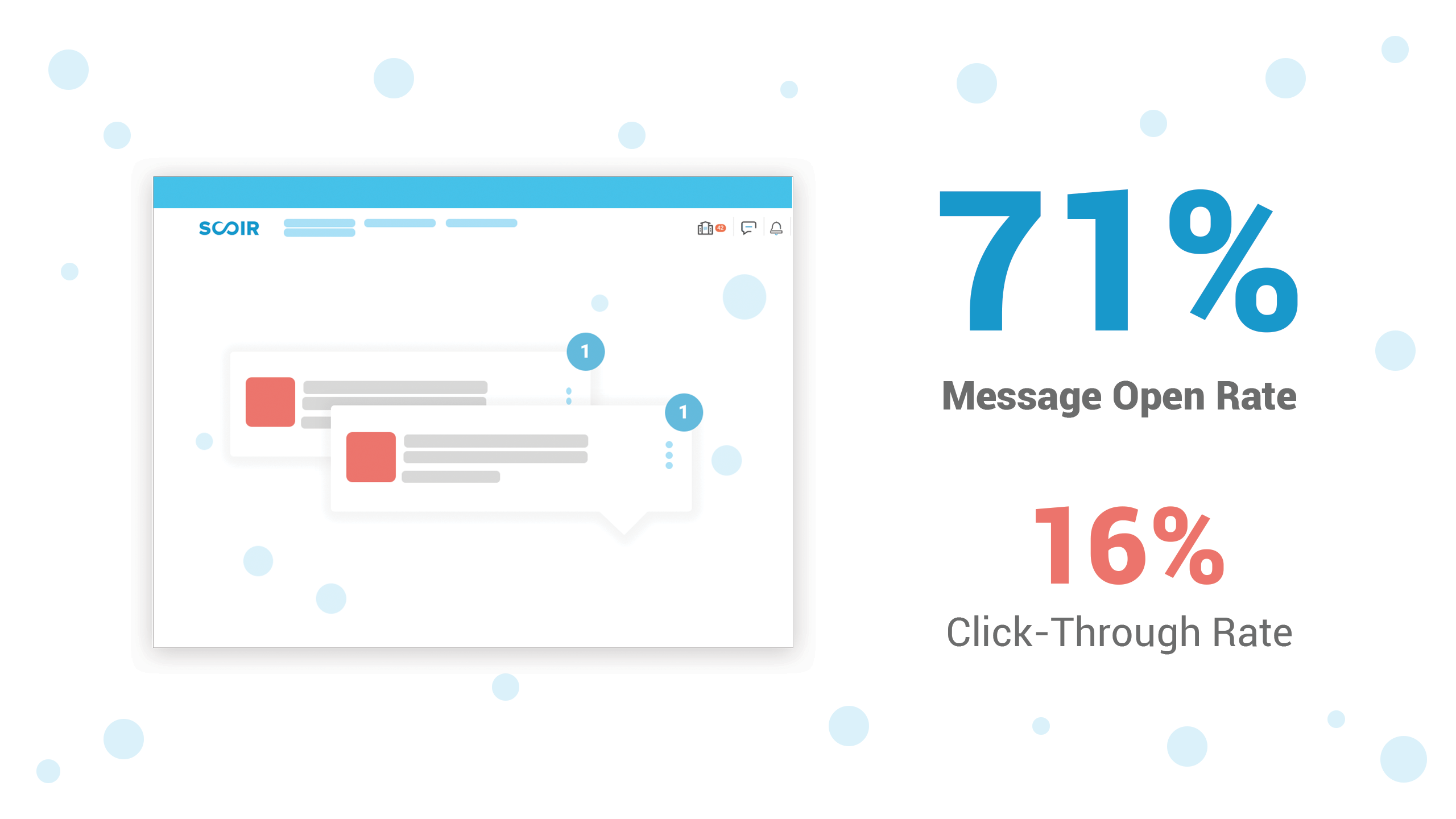How to Attract, Engage, and Yield High Intent Stealth Students

Admissions offices have known this for years: the number of stealth students is on the rise. According to research by RNL, at least 1 in 3 applicants to private four-year colleges in the U.S. are stealth applications. This number has only continued to rise during the pandemic. With stealth students becoming an ever increasing percentage of the prospective student pool, the challenge becomes understanding who stealth students are, how to engage with them, and predicting how they will yield.
Who are stealth students? Stealth applicants are students who don’t explicitly express interest in a college, also known as raising their hand, prior to application. Traditionally hand raising is done by entering into an institution’s CRM through filling out a request for information form or by attending a recruitment event. Identifying and engaging stealth students is more important than ever as colleges rely more heavily on digital recruitment efforts.
Why are students choosing to stay stealth?
There are multiple factors contributing to the rise in stealth students. Gen Z students are overwhelmed with marketing content in their everyday lives and are more savvy in identifying disingenuous marketing messages. Their email inboxes are already inundated with emails from colleges they aren’t interested in as a result of college name buying that largely go ignored. Research also shows that email is dead with only 19% of students using email for school related purposes. Instead they’re looking to gain an authentic and unfiltered understanding of the colleges they’re interested in, which often doesn’t come through in a college’s marketing and communications plan. Add to this hesitation around having their online personas tracked and prematurely judged by colleges prior to application, it’s clear why students are choosing to stay stealth.

Students are demonstrating interest in other ways
Prospective students are now researching and learning about colleges on their own, through places like institutional websites and social media accounts, social media accounts of current students and other influencers, and college search sites. In our research last spring, students identified the top six sources of information they relied on during their college search both on and offline, as search engines, family members, friends, video/news sharing sites, college fairs, and social media. Students also identified some of the biggest challenges they face as being the ability to dig deeper beyond the surface level information readily available on college websites and the lack of personalized information unique to their interests be it academic programs or campus life. These challenges extend to virtual events. On a recent episode of our Inside College Admissions podcast entitled “Students Don’t Have Zoom Fatigue. Your Content is Boring,” we discussed tips for crafting more compelling content to resonate with Gen Z audiences. While conducting their own research, students are making up their own minds about the culture and quality of colleges and what programs are available, which may or may not be accurate.
With a growing percentage of stealth applicants, it is becoming more critical than ever for colleges to find ways to connect with stealth students earlier in the admissions process to help accurately inform students about their offerings. Some digital marketing services and social listening tools can help track the ways in which interested students are engaging with a college's online content, but they don’t provide the ability to engage with those students outside of digital advertising.
Instead colleges need a way to build brand affinity with students and families where they’re already researching schools outside of the noise of their email inbox in a way that’s student-centered. This gives students the power to opt in and out of colleges’ admissions funnel as they make decisions about whether or not to continue pursuing a college and overcomes the concerns students have about demonstrating interest directly to a college.


How to Solve the Stealth Problem with Scoir
We’ve created a college admissions network where students can work together with their high school counselors, students, and families to identify their key strengths, search and compare colleges, and submit application materials all in one place. We’re trusted by 1 out of every 15 high schools and doubling in size each year. From day one, we are committed to protecting the privacy of our student’s data. When students express interest in a given school by following them within Scoir, that school is able to message the student, but only within the platform where students are focused on their college search. This gives students the ability to remain anonymous and gives colleges the opportunity to engage with stealth students who have high intent. As colleges authentically engage and develop relationships with students, students become more likely to share their information with a college. One of our partner colleges found that 70% of the students following them in Scoir were not in their CRM prior to application. These are hundreds of students the school would not otherwise be able to connect with.

We challenge our partner colleges to rethink their admissions strategies to take a student-centered approach and build authentic relationships with prospective students, so that students can make more informed decisions when making their college selection. Our commitment to students is at the core of our mission to improve collegiate outcomes. And it’s working.
Students on Scoir are more engaged than prospective students in colleges' CRM funnels. On average, students follow 11 schools on Scoir and apply to 1 in 2 colleges they follow. Students are also engaging with messaging in Scoir more than email. One partner college saw a 71% open rate for their very first message to interested students with a 16% click-through rate. To give some perspective, various research studies show the average open rates of higher ed prospecting emails are between 21-26% with average click-through rates of one to six percent.

Part of this success is driven by the rich data insights on prospective students that colleges are provided. This empowers colleges to create personalized search experiences and messages at scale using segmentation. Colleges can identify specific profiles of students, such as first-generation students in the Southeast that are interested in majoring in business and joining the a cappella group on campus, and craft messages to them all while maintaining the privacy, and stealth status, of the individual students. That level of engagement and personalization isn’t limited to students. Colleges can also begin developing relationships with parents and guardians of stealth students starting as early as freshman year of high school. Most partner colleges find that more than half of their junior followers have a linked parent or family member in Scoir.
Identifying and engaging stealth students is a growing challenge in college admissions, but it doesn’t have to be. With Scoir, colleges can engage with best-fit stealth students with high intent that are more likely to convert and yield. Colleges can help students gain an accurate understanding of their campus culture and educational opportunities while students maintain their privacy and stay in control of the flow of marketing messages from colleges. Learn more about our enrollment marketing solutions on our website. If you’re ready to start building relationships with your stealth students and their families, request a consultation with our Customer Success team to review data insights about your school’s prospective students.

This content was paid for and created by Scoir. The editorial staff of The Chronicle had no role in its preparation. Find out more about paid content.



